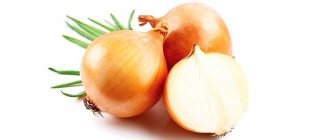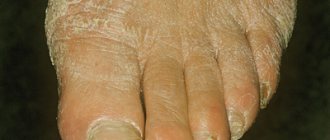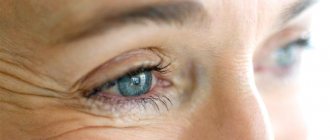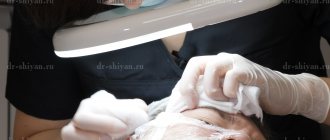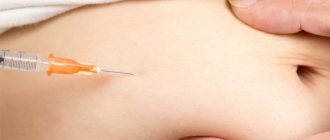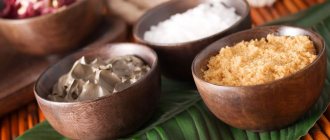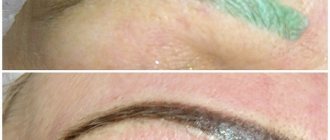Legs are under constant stress. As a result, problems arise that interfere with a normal life. Corns and calluses are a painful and unaesthetic phenomenon, but this is not a death sentence. You can get rid of them at home. You will forget about discomfort, dryness and flaking on your feet. It is enough just to develop the habit of taking baths for corns. In this article we will introduce you to folk recipes that are easy to implement at home, and also tell you what rules you should follow to avoid this problem.
The benefits of baths for calluses and corns
At the moment, there are a huge number of options for getting rid of calluses and corns, but home methods remain no less effective. These procedures are always cheaper than visiting a salon or buying special store-bought products. Baths for corns are affordable and effective.
Why do dry calluses appear on my feet? Several possible reasons:
- hyperactivity;
- rubbing from shoes;
- heredity;
- fungus;
- improper foot care or lack thereof;
- poor circulation in the legs;
- foot injury;
- lack of vitamins and poor nutrition;
- long-term use of antibiotics.
But the main reason is tight shoes. Even if it is made from expensive and high-quality materials, not to mention the usual one, which is made using synthetic additives. With constant friction of the skin of the feet on shoes, it becomes traumatized, which is likely to result in the appearance of a dry callus. You should not ignore the problem to prevent significant deterioration.
It is recommended to regularly care for your feet, without waiting for peeling and dryness to occur.
To get rid of calluses and corns, it is enough to take baths. Benefits of the procedure:
- relieves discomfort when walking;
- softens the skin;
- promotes cleansing of dead cells;
- relieves inflammation;
- improves blood circulation;
- nourishes and promotes tissue regeneration;
- helps restore water balance in epidermal cells;
- moisturizes and fights dryness;
- allows you to easily remove calluses;
- gives relaxation to muscles and joints;
- improves the general condition of the body;
- makes your legs look healthy.
Regular use of creams and oils helps reduce the risk of calluses and corns.
Why do they appear and what are they?
Corns and calluses are areas of rough, cracked skin that most often form on the feet and toes. The cause is insufficient blood supply, prolonged friction or pressure, usually caused by wearing tight and uncomfortable shoes, as well as lack of proper foot care. In this case, dead cells do not exfoliate, the epithelium thickens, and cracks appear.
Such rough areas are potential sources of inflammation, as the skin may begin to crack and bleed, and in severe cases inflammation may occur. This is why regular care is so important, and a bath is a good way to make the skin of your feet soft and tender.
https://youtube.com/watch?v=0iDYQKOKmwg
Homemade bath recipes for corns
With sea salt
This foot bath is incredibly effective and easy to use.
- Dissolve half a glass of sea salt in 1 liter of warm water.
- Place your feet in the water for 1 hour.
- Rub the softened skin with a pedicure stone and cut off calluses with scissors.
Steamed legs are easier to process.
With baking soda
An even more affordable recipe. Soda foot bath:
- helps get rid of microcracks, calluses, corns;
- disinfects;
- starts the regeneration process;
- softens the skin.
Application:
- Dissolve 3 tablespoons of soda in 3 liters of warm water.
- Add 1 tablespoon of shower gel; you can also add essential oils to the bath.
- The duration of the procedure is 15 minutes.
- When finished, remove dead skin.
With iodine
Thanks to this bath, the skin of your feet will become silky and soft. Visible results after the first use. Iodine improves blood circulation.
- For 5 liters of warm water you will need 1 teaspoon of iodine. Stir.
- Add one tablespoon of baking soda or sea salt.
- Place the legs in a container of water and hold for 40 minutes.
- Periodically, we take out our feet and rub them with pumice, clearing them of the stratum corneum.
With hydrogen peroxide
Everyone has this component in their first aid kit. To remove corns quickly at home, you should use this bath:
- Add 2 tablespoons of peroxide to 5 liters of warm water.
- We carry out the procedure within half an hour.
- Dry your feet and easily remove calluses with scissors and pumice.
Peroxide perfectly softens rough skin on the feet. They become smooth and pleasant to the touch. With regular use of the bath, you will quickly notice the result.
In addition to baths, do not forget to use creams, ointments, and compresses. Only an integrated approach will bring lasting and quick results.
With lemon juice
Lemon juice baths help fight redness, flaking and inflammation of the skin. It acts like an acid peel.
- Dilute lemon juice in a ratio of 1:10 with water. Do not add more juice under any circumstances. This may cause burns.
- The procedure should take no more than 10 minutes.
- Then rinse your feet thoroughly with warm water.
- Treat your feet with a pumice stone or file.
You will notice improvements immediately, but for lasting results you need to do this bath 2-3 times a week for a month.
Lemon juice can be replaced with vinegar.
With sour milk or whey
Whey, curdled milk and sour milk are ideal means to get rid of corns and soften them.
- Heat the liquid until it is warm but not hot.
- Immerse your feet in the container for 20-30 minutes.
- Dry your feet with a soft towel.
- Gently remove corns and calluses.
With herbal decoction
This is a gentle treatment for feet prone to the formation of corns and calluses. It is suitable for even the most sensitive feet. In addition, this method softens the skin. Use:
- mint;
- nettle;
- sage;
- chamomile flowers;
- thyme.
Chamomile
The most versatile herb. It helps the body cope with a huge number of ailments. Chamomile can calm nerves, relieve tension and irritation, and also cure many diseases. At the same time, it also reduces muscle tone, which is especially good for cramps. It is incredibly effective in the fight against corns. To get rid of dry calluses, just brew chamomile flowers and soak your feet in the decoction. It will soften the skin and disinfect. You can easily remove the stratum corneum. The advantage of this procedure will be getting rid of sweating feet, which plagues many.
- Brew 200 g of chamomile in 3 liters of water.
- You can add other herbs from the above, as well as oak bark and linden blossom.
- When the broth has cooled to 38 degrees, you can begin the procedure.
- After 15 minutes, start treating your feet.
Treatment of feet with other herbs is carried out in the same way as with chamomile. After several such procedures, the skin will noticeably soften, and rough areas will gradually disappear. There is no need to use chemicals that can be dangerous to the body.
With essential oils
Effective against corns and calluses:
- lavender;
- orange;
- rosemary;
- tea tree oil;
- lemon oil;
- eucalyptus oil;
- clove
Lavender oil has bactericidal properties, and clove oil has a soothing, analgesic, anti-inflammatory, and wound-healing effect on the skin. If calluses or corns form, oils can be combined or used alternately. They nourish the dermis, saturate it with essential microelements, moisturize, eliminate unpleasant odor and cracks. Before using this or that ingredient, you need to find out its properties. If there are wounds or abrasions on the skin, then using the oil is strictly prohibited.
All oils can be bought at the pharmacy. The choice depends on the individual characteristics and problems with the skin of the feet.
To increase efficiency, pepper tincture can be added to any bath as an auxiliary component. The feet will receive an additional incentive to regenerate and soften.
With potassium permanganate
Foot baths with potassium permanganate are very useful for sweating, corns and fungal diseases. But now it’s difficult to do it yourself at home. Currently, manganese is sold in pharmacies, but in very small quantities. If you have a supply of potassium permanganate, then proceed with the procedure:
- It is necessary to prepare a light pink solution.
- Immerse your feet in the solution for 15-20 minutes.
- Dry them, clean your feet with a pumice stone or a special file.
Precautionary measures
Like any other medicine, peroxide has restrictions on its use, which you must first familiarize yourself with. Otherwise, the treatment procedure may have the opposite effect and complicate the situation.
To prevent negative consequences, you should follow the following recommendations:
Before the first treatment, you need to do a sensitivity test. Baths and lotions are prohibited if you have an individual intolerance to the component. Treatment is contraindicated if the skin is excessively dry. If there are severe cracks or open wounds on the feet, then the procedure should be abandoned until complete healing. Sessions are carried out with special caution in severe forms of kidney and liver diseases, dermatitis herpetiformis.
Considering that you cannot constantly use this antiseptic, and you need to take care of the condition of your feet regularly, it is recommended to alternate the use of peroxide with solutions based on sea salt or infusions with the addition of coniferous herbs.
Among the medicinal plants that are effective are chamomile, calendula, nettle and St. John's wort.
Recommendations for foot care
Old calluses and corns need to be actively combated, because one episode of care will not be enough. Follow these simple recommendations to get rid of the problem forever:
- Choose a container that can accommodate two full feet. This will help the skin steam evenly.
- It is worth doing the procedures before bed.
- Before taking a bath, wash your feet well under running water to remove excess dirt.
- The water temperature should not exceed 50 °C. Cold water will not give the desired effect, and hot water can worsen the situation. Give preference to warm water (39-40 °C).
- To remove the stratum corneum from the feet, it is advisable to use a special brush or pumice stone. Make smooth movements so as not to injure the skin.
- Massage your feet and toes to improve blood circulation and improve the flow of substances to the dermis.
- You should temporarily avoid visiting a bathhouse or sauna when treating your feet.
- If you feel discomfort in the foot area during steaming, it is better to stop the procedure.
- You should use foot baths for varicose veins with caution.
- If you feel dizziness, weakness, nausea or pain, it is better to interrupt the procedure and consult a doctor.
- If you have rough areas not only on your feet, but also on your heels, then in this case we advise you to use a peeling or scrub. After these procedures, the skin softens and is easy to treat. Then apply cream or oil to deeply moisturize.
- For the best effect after baths, you need to wear cotton socks. Allow your feet to cool gradually.
- If you have severe damage, you may need serious remedies, which the doctor will prescribe after assessing the extent of damage to the dermis.
- Develop the habit of doing a contrast shower for your feet every day, especially after a hard day at work.
- Baths for prevention should be used 2 times a week.
- After steaming, do not go outside, beware of hypothermia.
- Avoid wearing tight shoes. It provokes the appearance of calluses and corns. Give preference to natural materials.
- Get a foot pedicure at least twice a month. Even in winter.
- When caring for your toenails, don't forget to treat your feet. They need attention.
Main symptoms
It would not be superfluous to add that before removing corns, you need to make sure that the diagnosis is correct. So, the presented problem manifests itself as follows:
- in the initial stage, redness and swelling are observed affecting the affected area of the foot;
- as it develops, dry callus becomes much more noticeable, characterized by a grayish-yellow color and the absence of clear contours;
- the surface of the corn can be either smooth or rough, and may have cracks of varying depths;
- the sensitivity of the skin in areas affected by developing dry calluses is almost always reduced, and pain manifests itself while walking or running;
- provided there is an inflammatory process, most often provoked by infection, the discomfort increases significantly, and the size of the cracks increases noticeably.
Regarding the shape of dry calluses: it can be not only convex, but also flat. In addition, sometimes corns can cause the development of swelling of the soft tissues located in the immediate vicinity of them.
Corns can crack painfully
Contraindications
Despite the fact that this method of foot treatment is relatively safe, the procedure has contraindications:
- You should not steam your feet when your body temperature rises, for example, during illness. This may cause deterioration.
- Pregnant women are prohibited from warming their extremities. This can cause miscarriage or premature birth.
- During menstruation, foot baths can cause bleeding.
- An allergic reaction is a signal to cancel the procedure. If you have a severe allergy, consult a doctor immediately.
- In case of diabetes mellitus, treatment of corns should be supervised by a doctor.
In case of severe damage to the skin, it is necessary to consult a doctor and choose treatment tactics based on individual characteristics.
Every millimeter of our body needs care. Do not neglect procedures that improve the appearance and condition of your feet. Foot baths are a popular and proven way to relieve discomfort, so it can be safely used by both men and women. Be healthy!
Why do you need a water treatment for your feet?
Depending on the components, time and temperature of this procedure, foot baths can have the following effects:
- relaxing and relieving fatigue, which is important for relieving stress if work involves constant stress on the legs;
- tonic – for quick restoration of performance;
- a vasodilator that helps relieve headaches and lower blood pressure;
- warming - useful for people with poor blood circulation or simply chilled after being outside for a long time in bad weather;
- deodorizing – for feet prone to excessive sweating;
- cleansing and softening - to get rid of stubborn dirt and prepare the skin of the feet for cosmetic procedures;
- antifungal, which can significantly improve the health of skin and nails with regular use, especially in combination with additional components and special medications.
Important! Foot baths can play the role of both an independent procedure and be used as part of complex therapy as an adjuvant.
How nice it is to do yourself
Any self-care gives rise to a positive attitude, which psychologists consider a direct path to happiness. Pedicure is an art. After all, everything ends with painting - applying varnish to the nails.
Modern fashion dictates not the boring application of one color on each nail, but wild imagination. One month it is customary to alternate colors that do not match each other, the next - one nail should be slightly longer than the others. Moreover, it should shine with sparkles, which can be purchased in the store.
Keeping yourself busy wards off boredom and bad mood. No one will be able to give themselves a pedicure and be bored at the same time. A woman begins to feel better about herself, which is always reflected in her appearance. If a pedicure is done regularly and foot care is constantly taken care of, then you can do it quickly and enjoy it.
Finally, by mastering any new knowledge, any of us becomes more free and independent.
How to remove corns using pharmaceutical products
Pharmaceutical products include creams, ointments, and adhesive plasters. These products include salicylic acid, which has keratolytic (softening) and anti-inflammatory properties, and also helps exfoliate dead skin cells.
Before using such a product, you should make a steaming foot bath in order to enhance the desired result.
You should buy the necessary products at the pharmacy, then apply a generous layer only to the affected part of the foot, without touching healthy skin. The applied product should be covered with an adhesive plaster for several hours, or better yet, overnight.
After removing the adhesive plaster, the softened corns can be easily removed with a rough pumice stone. If necessary, the procedure should be repeated.

